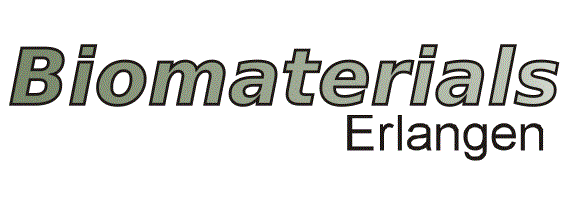Phillipp Schultheiß
Phillipp Schultheiß
Bachelor student
Characterisation of ADA-GEL based composite bioinks
Supervisors: Susanne Heid, Prof. Dr.-Ing. habil. Aldo R. Boccaccini
Biofabrication is a promising field for tissue (and organ) engineering, because it enables processing materials, cells and biological molecules in one step. Hydrogels are widely used for biofabrication because they provide cell friendly process parameters as well as they are similar to the extracellular matrix. In this research, alginate dialdehyde combined with gelatin and bioactive fillers (ADA-GEL-BIF) are used as hydrogel system [1]. This composite system provides cell adhesion and a gentle and rapid crosslinking in the presence of divalent cations [2].
In this Bachelor thesis different composite hydrogel compositions will be evaluated. The bioinks will be dissolved either in DPBS or in DMEM and the long-term stability in terms of shape, mechanical properties or release of specific proteins and ions will be evaluated. Furthermore, the ratio of ADA and gelatin will be varied and the obtained hydrogels will be crosslinked ionically and enzymatically, respectively.
This research aims to gain a deeper insight in the influence of the dissolution medium on important parameters for biofabrication, like cell viability and the mechanical properties of composite hydrogel scaffolds over time. In addition, an optimized composition of the composite bioink for soft tissue engineering will be determined.
[1] Leite et al., Bioplotting of a bioactive alginate dialdehyde-gelatin composite hydrogel containing bioactive glass nanoparticles; Biofabrication, 8, 035005, 2016.
[2] Reakasame et al., Cell laden alginate-keratin based composite microcapsules containing bioactive glass for tissue engineering applications, Journal of Materials Science: Materials in Medicine 29, 185, 2018.

